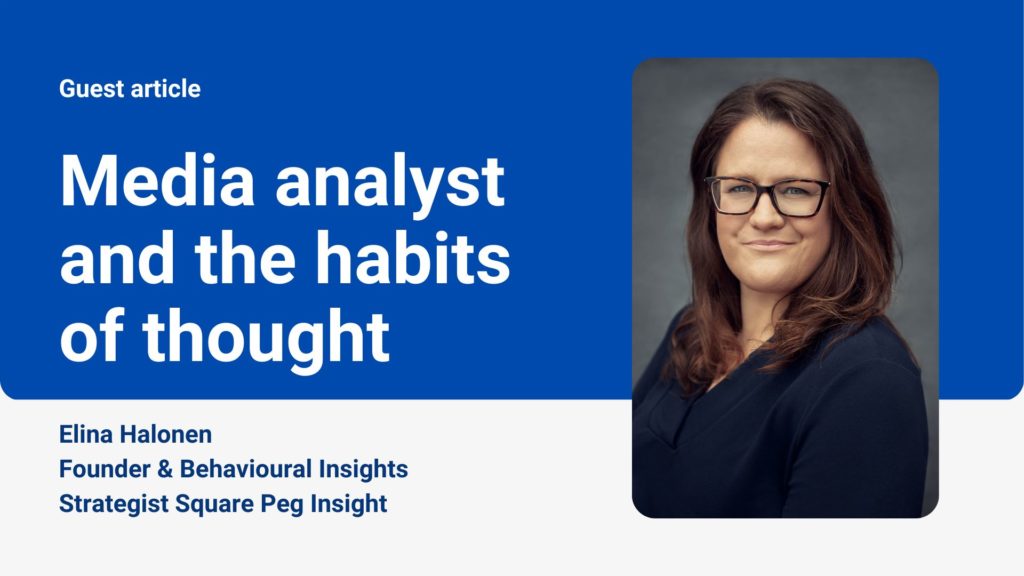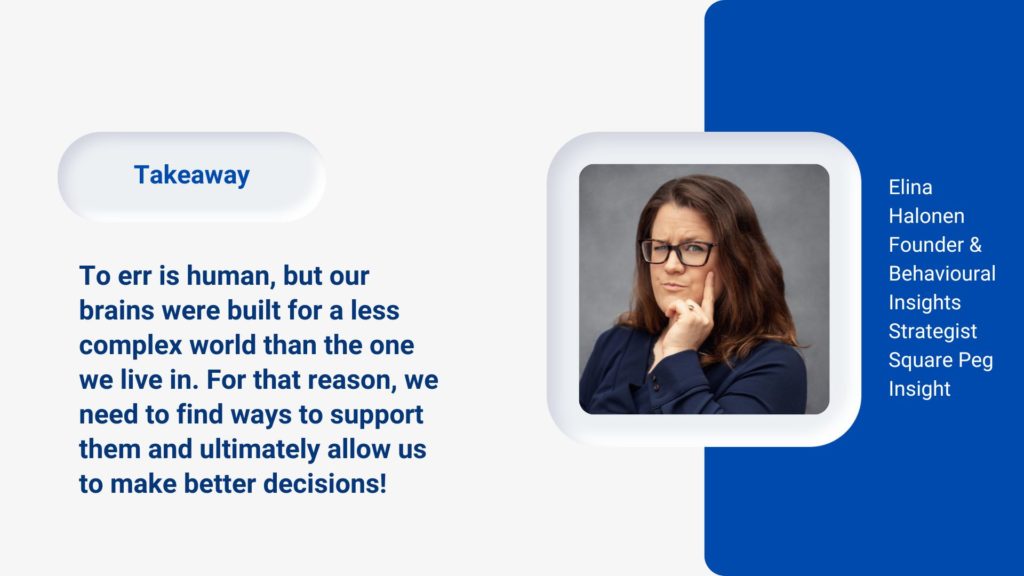By Elina Halonen, Founder & Behavioural Insights Strategist, Square Peg Insight
For the past 20 years my work has focused on understanding why people do what they do as a researcher analysing qualitative and quantitative data within a market research context – work that has remarkable similarities to the work of an analyst working in media intelligence despite the seemingly different sectors.
Like media analysis, market research has become more complex with a need to handle constantly increasing amounts of information while being under the pressure of faster deadlines for deliverables. In this kind of environment, our thought processes are easily sidetracked because the requirements exceed our minds’ capacity to process information.
The goal of both the market researcher and media analyst are the same: gather data, analyse it and report it as objectively as possible even though the characteristics of the data are different. To achieve the accuracy and fairness we strive for, both professions need to understand how the human mind filters, organizes and interprets information – be it the analyst, the journalist whose work they are analysing or the client reading the report produced by the analyst. We also need to understand how context influences these habits of thought: for example, we tend to search less information when we are in a hurry and weigh negative information more heavily.
Our brain takes shortcuts when we are aware of it in order to save energy so with every thought and decision we make, the brain trades off speed with accuracy. Most of the time our brain makes sensible choices on our behalf, but when we find ourselves in a situation where we’re continuously prioritizing speed, we are potentially training our brains to make biased choices. We can’t consciously handle all the information we receive so only the most important, most salient, or easiest to process information will be recorded. We then focus on whatever is in our short-term memory and filter information by processing things that fit into a known pattern and our brain can’t manage the information that we have gathered we evaluate things relative to what we already know or expect.
These three tendencies can easily lead our minds astray and subtly bias the media analysis process – and especially so when it comes to being susceptible to increasingly convincing fake news! All of us have culturally shaped mental frameworks in our minds that simplify and organize knowledge about people, events and even ourselves. For example, these shortcuts guide our attention to what we perceive to be newsworthy, or know to be so based on our experience.
The more easily a story writes itself, the more likely it is that you are leaning on your existing habits of thought so consider it a warning light to pause for reflection. Checklists are widely used in many high stakes professions such as pilots to counter the human tendencies that might cause mistakes, and they can also be a useful tool for the media analyst to debias their thinking.
We also can start to counter our biases by observing how we think, considering the opposite of our initial judgment and always reflecting on the cultural and social context – whether it’s the journalist, their sources, you as the analyst or your client. What we consider as normal is only so because it is most familiar to us, so we need to consider how our own mental frameworks might match or clash with those of a journalist or a client, and what blind spots might exist for everyone involved in the process.
About Elina Halonen
I invited Elina to be a speaker at the FIBEP Spring Summit that took place in Athens and talk about the habits of thought in media analysis.
Elina Halonen is a leading expert in behavioural insights and strategy. With 15 years of experience in consumer insights and advanced degrees in Marketing, Linguistics and Cross-Cultural Psychology, she uses her data detective skills to help companies improve their products, services and customer journeys with the data already have.
After a decade at the helm the pioneering behavioural insights consultancy she co-founded, she now works with companies across industries to guide them on behaviour change and behavioural design. As a founding member of the London Behavioural Economics member since 2012 and a certified member of the Global Association for Applied Behavioural Science, she is passionate about bringing together academia and the practitioner world.
You can stay connected with Elina via email or follow her on LinkedIn and Twitter.









